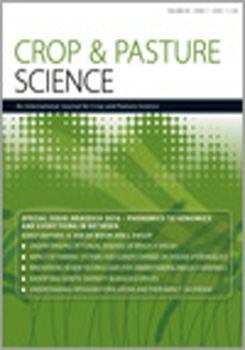Blackleg disease is caused by the stubble-borne pathogen Leptosphaeria maculans and results in significant yield losses in canola (Brassica napus) worldwide. Control of this disease includes breeding for resistance, fungicides and cultural practices including stubble management. In recent years, cropping systems have changed with the introduction of no-till farming and inter-row sowing, and it is unknown what impact these changes have had on stubble retention. The aim of this study is to investigate the impact of inter-row sowing on stubble retention and spore release. The use of inter-row sowing resulted in 25–48% of stubble remaining standing (vertical) in fields after 1 year. Furthermore, spore release was significantly (P < 0.05) delayed in stubble that remained vertical in the field compared with stubble lying down, with total spore release from vertical stubble 66% less than from horizontal stubble. The impact these changes have on the epidemiology of blackleg disease remains unknown.
How to translate text using browser tools
26 April 2017
Changes in farming practices impact on spore release patterns of the blackleg pathogen, Leptosphaeria maculans
J. McCredden,
R. B. Cowley,
S. J. Marcroft,
A. P. Van de Wouw
ACCESS THE FULL ARTICLE

Crop and Pasture Science
Vol. 69 • No. 1
January 2018
Vol. 69 • No. 1
January 2018
canola
horizontal stubble
inter-row sowing
standing stubble




